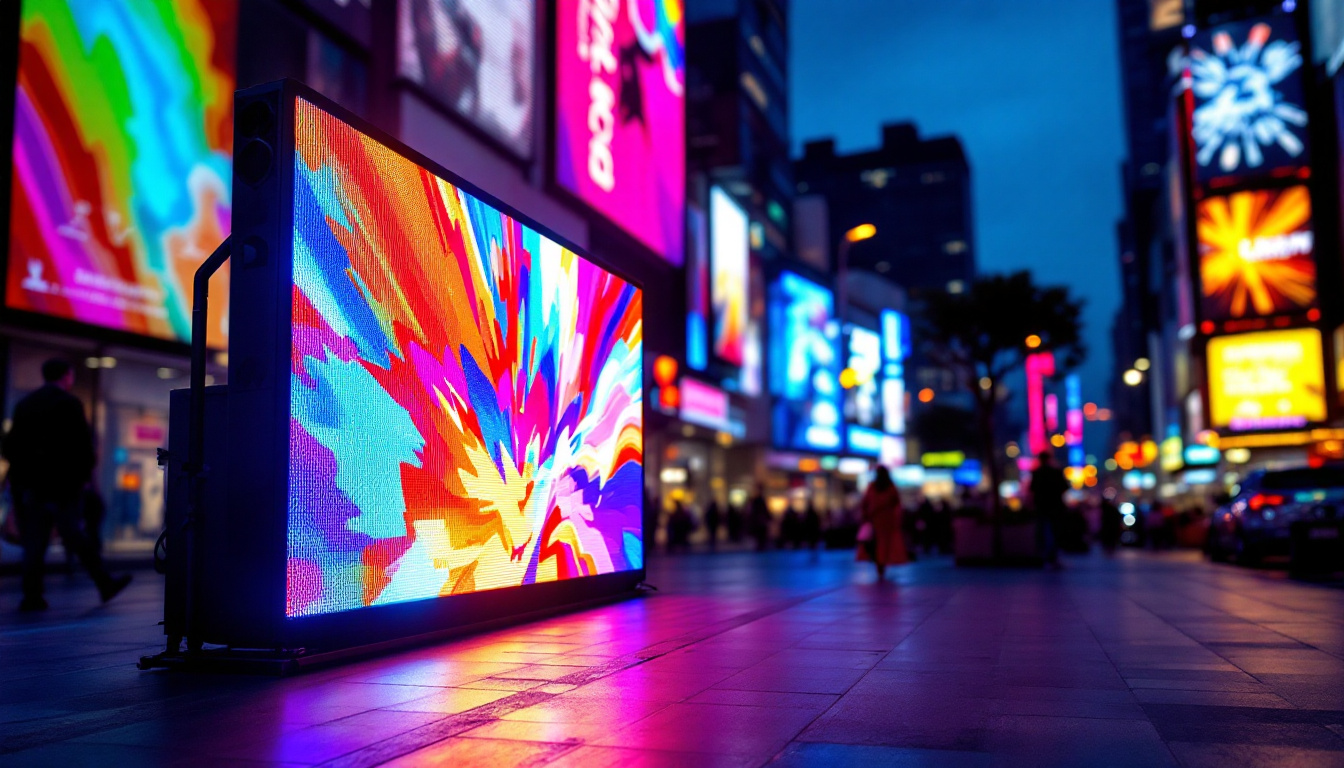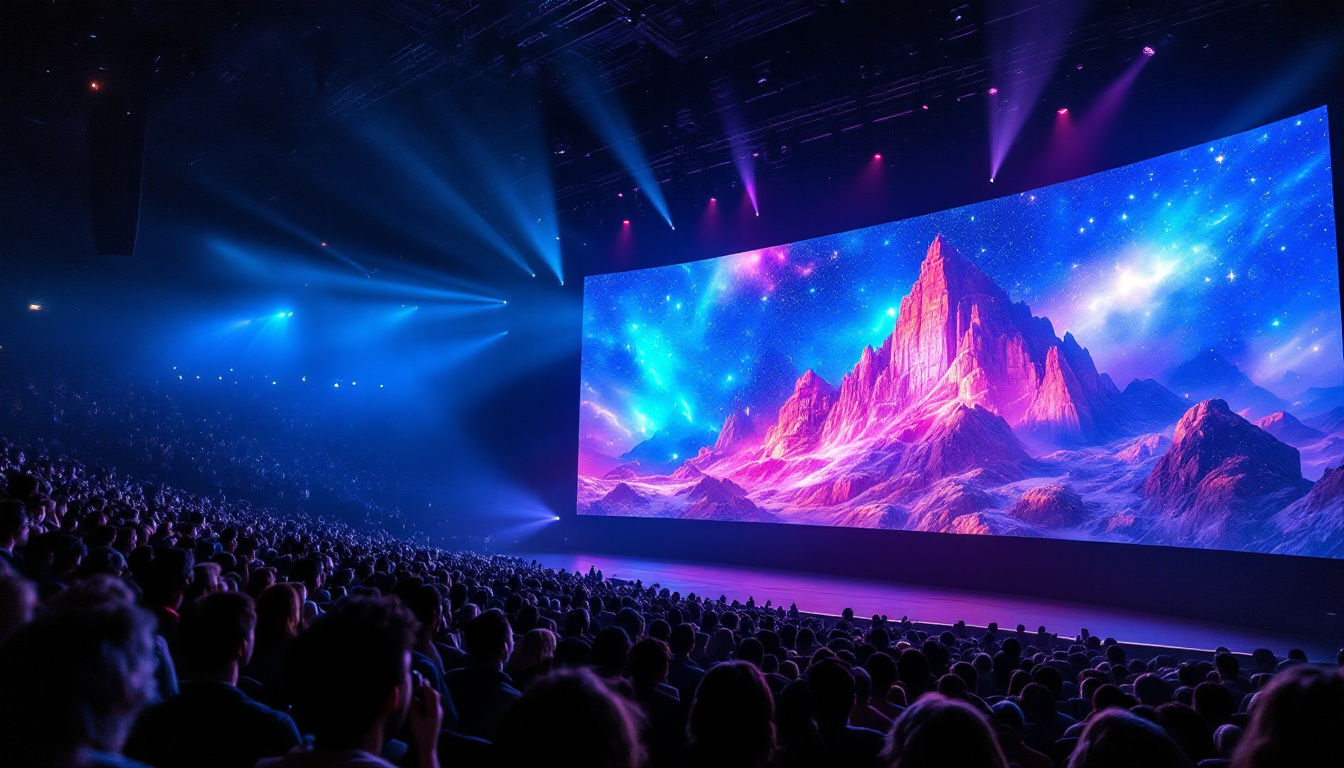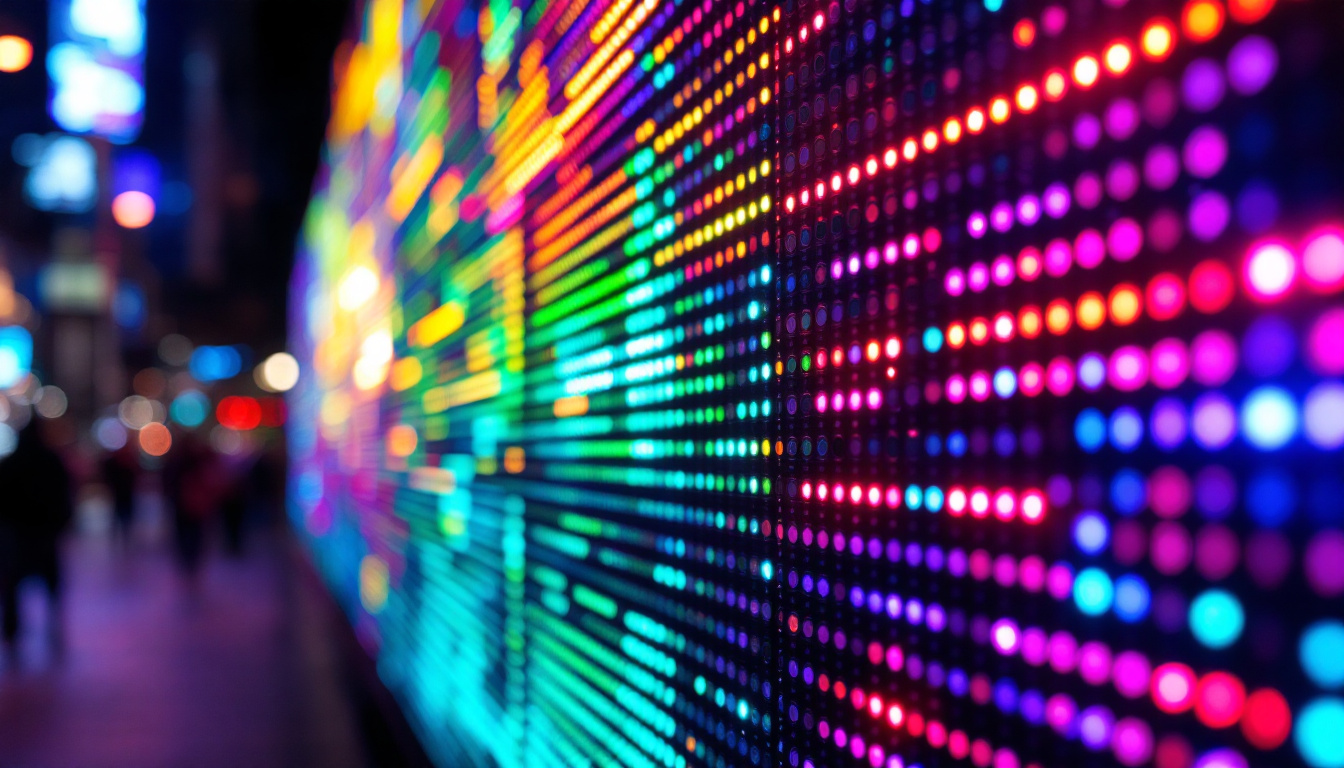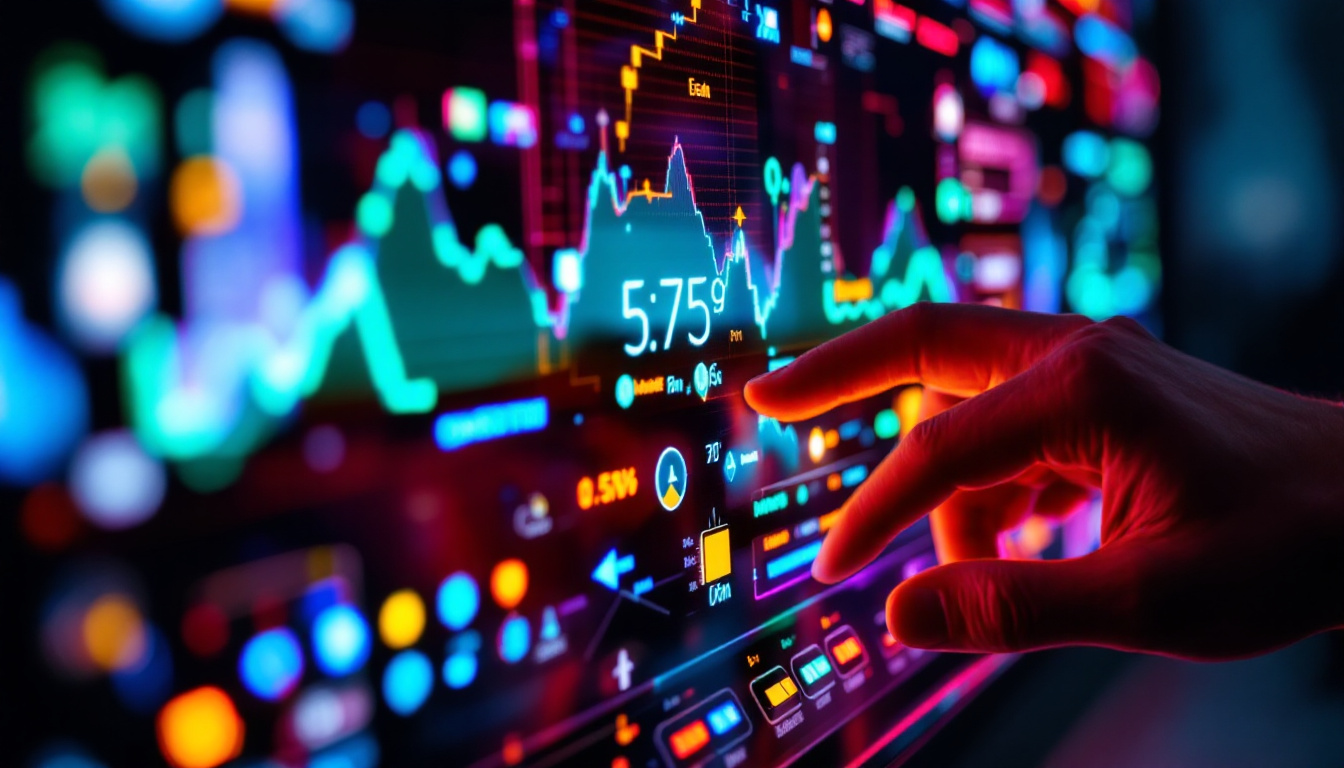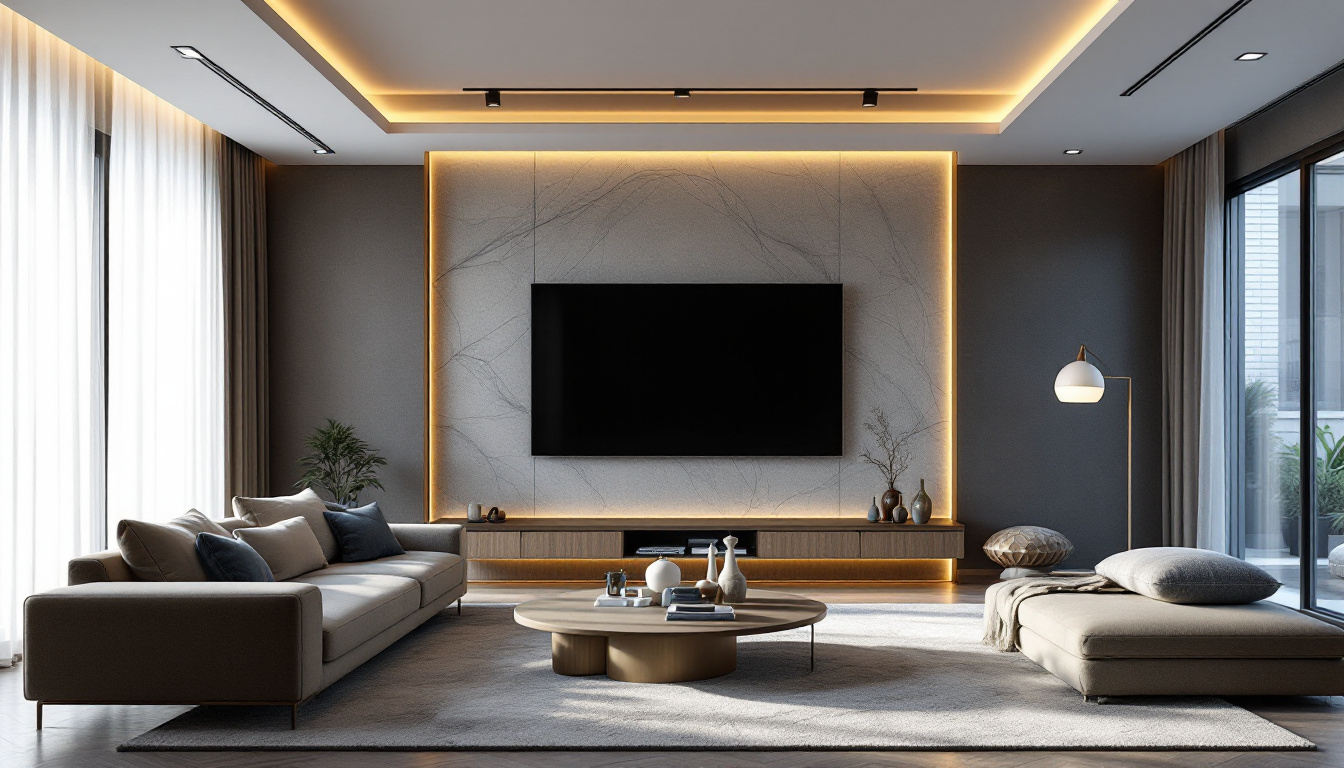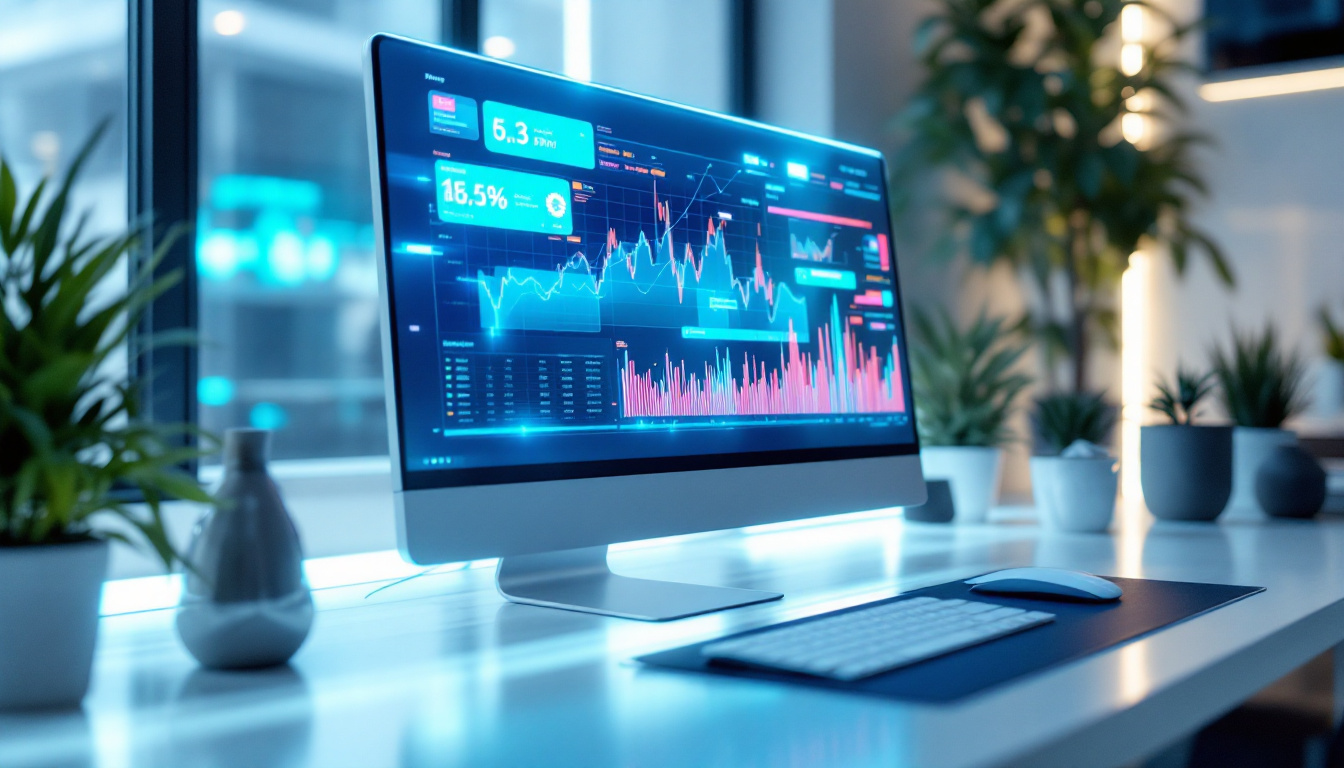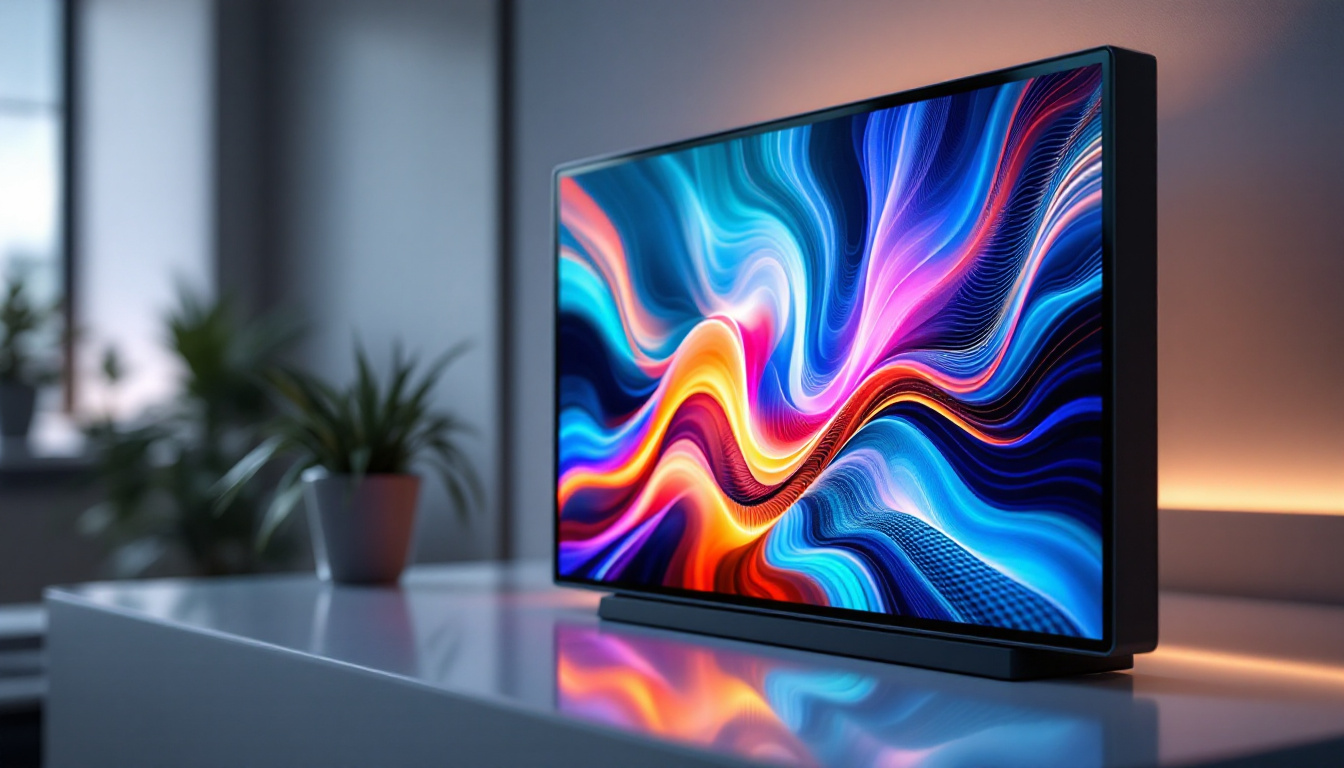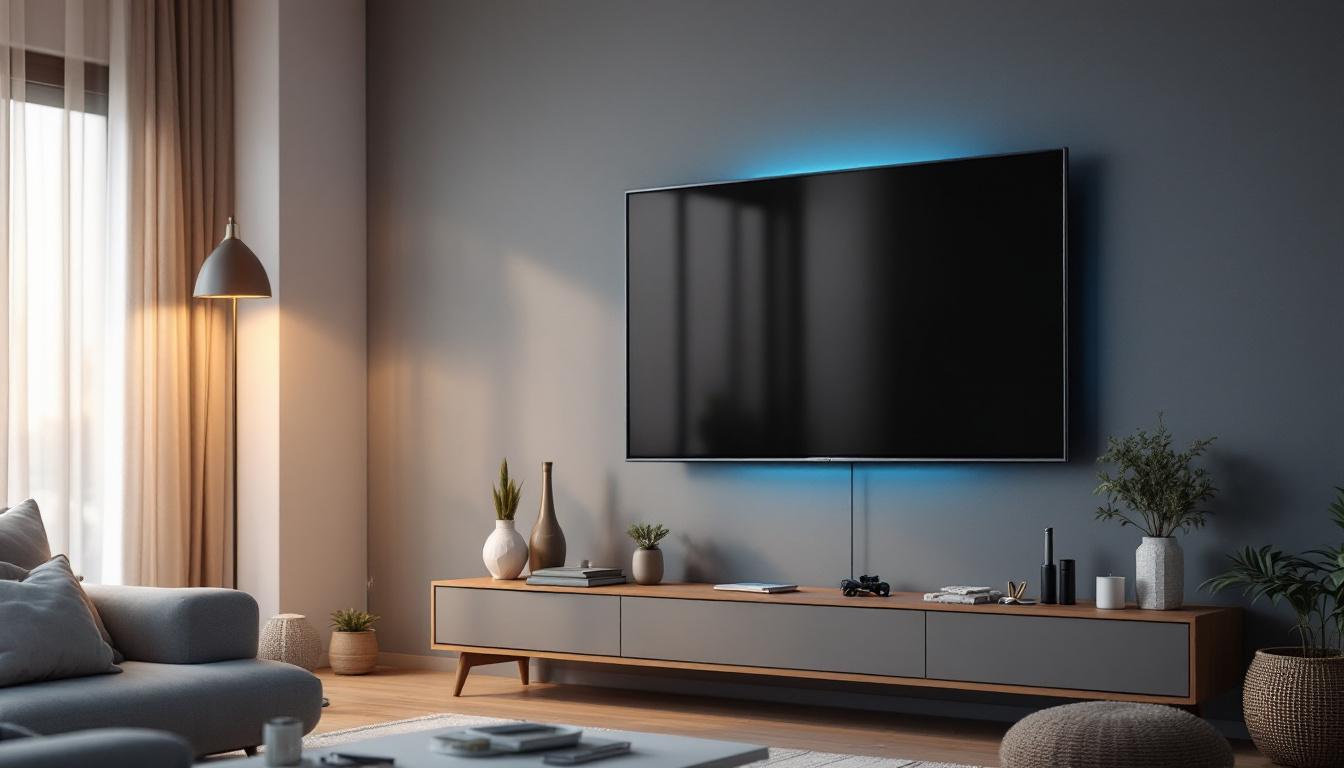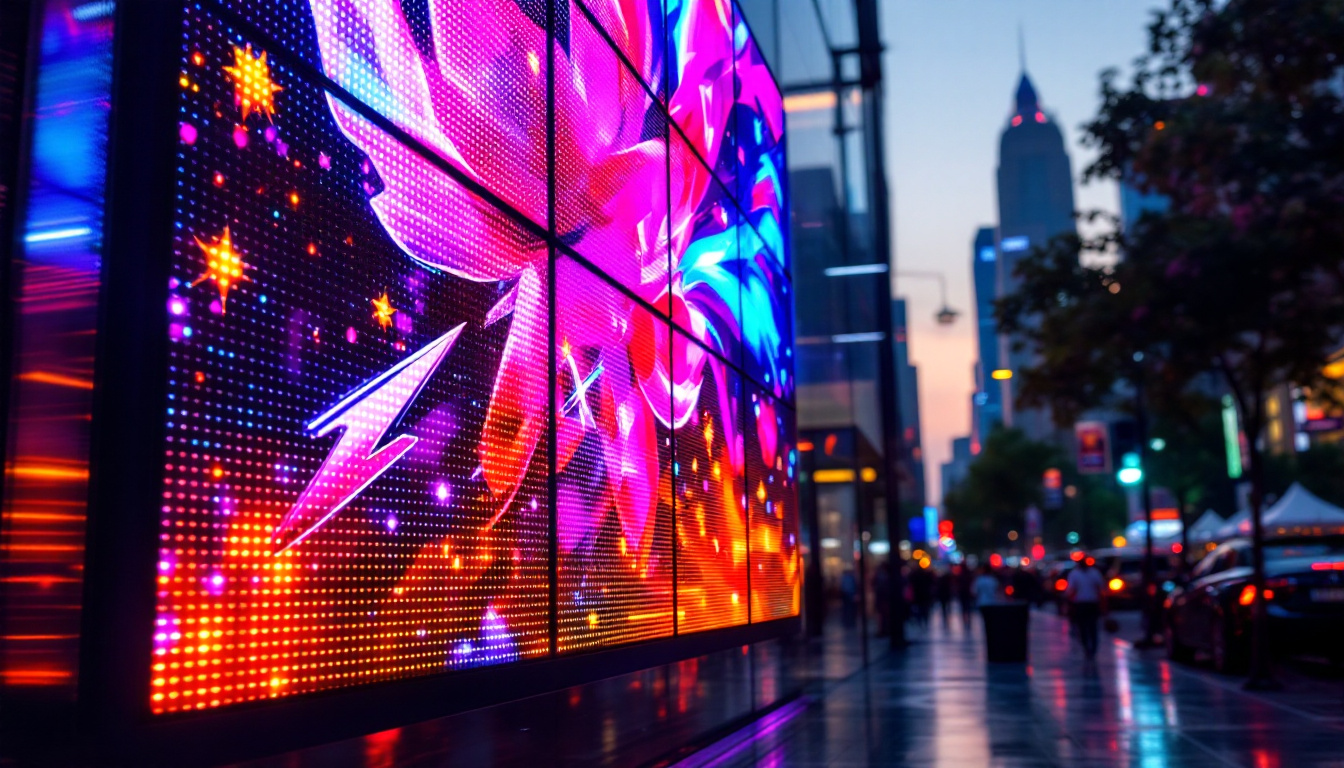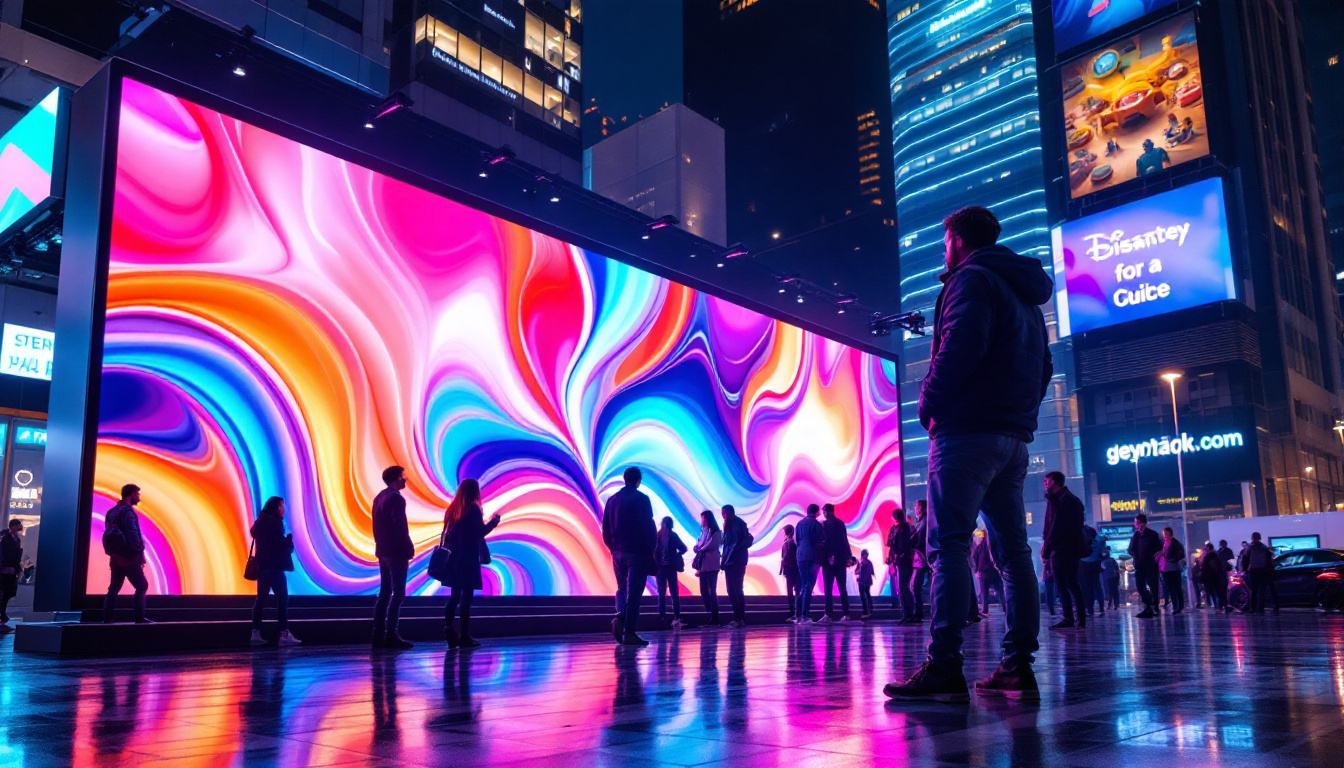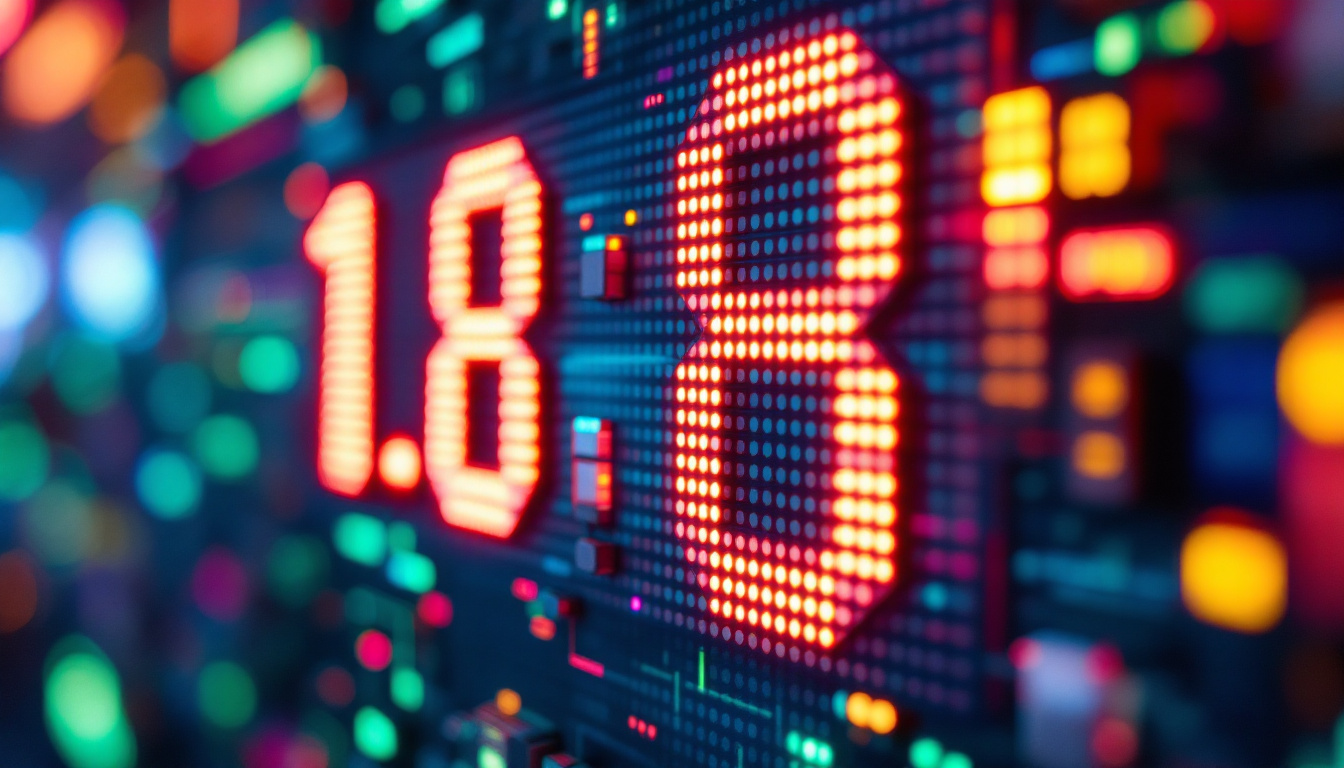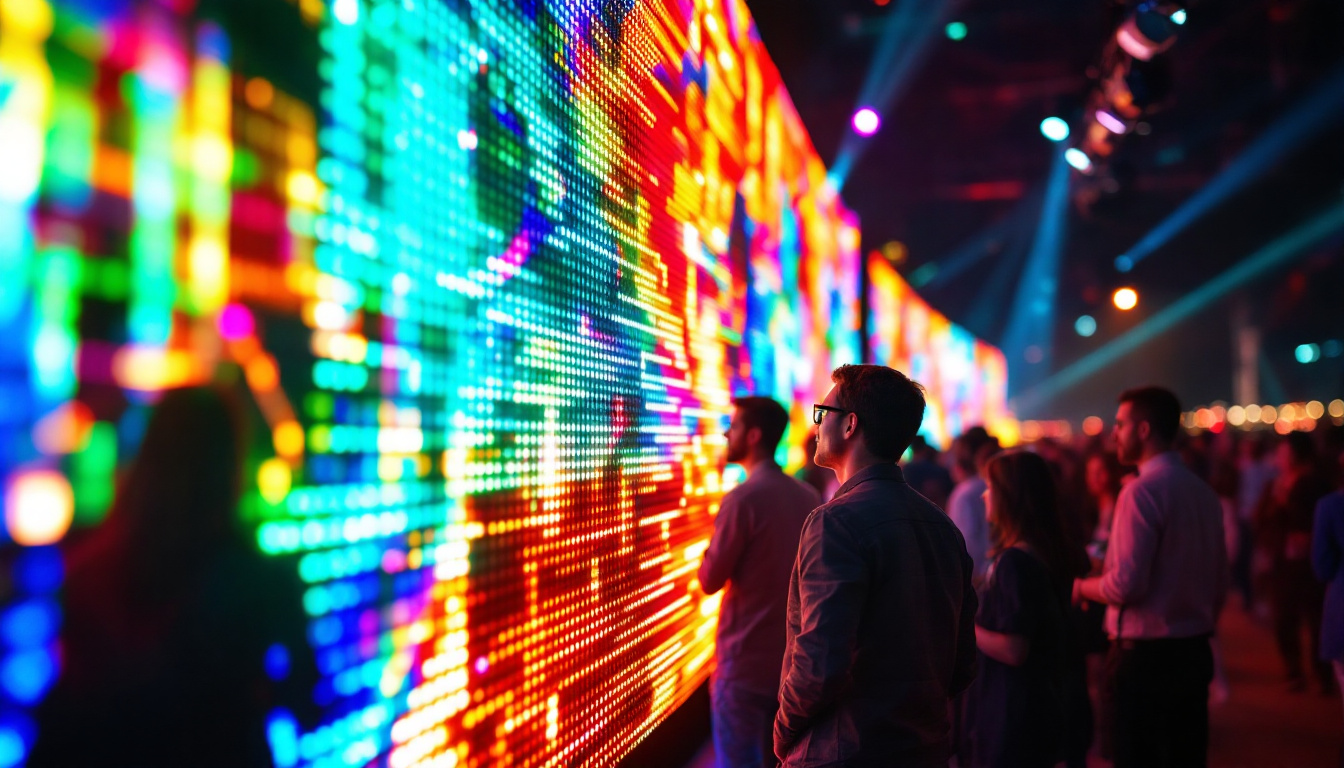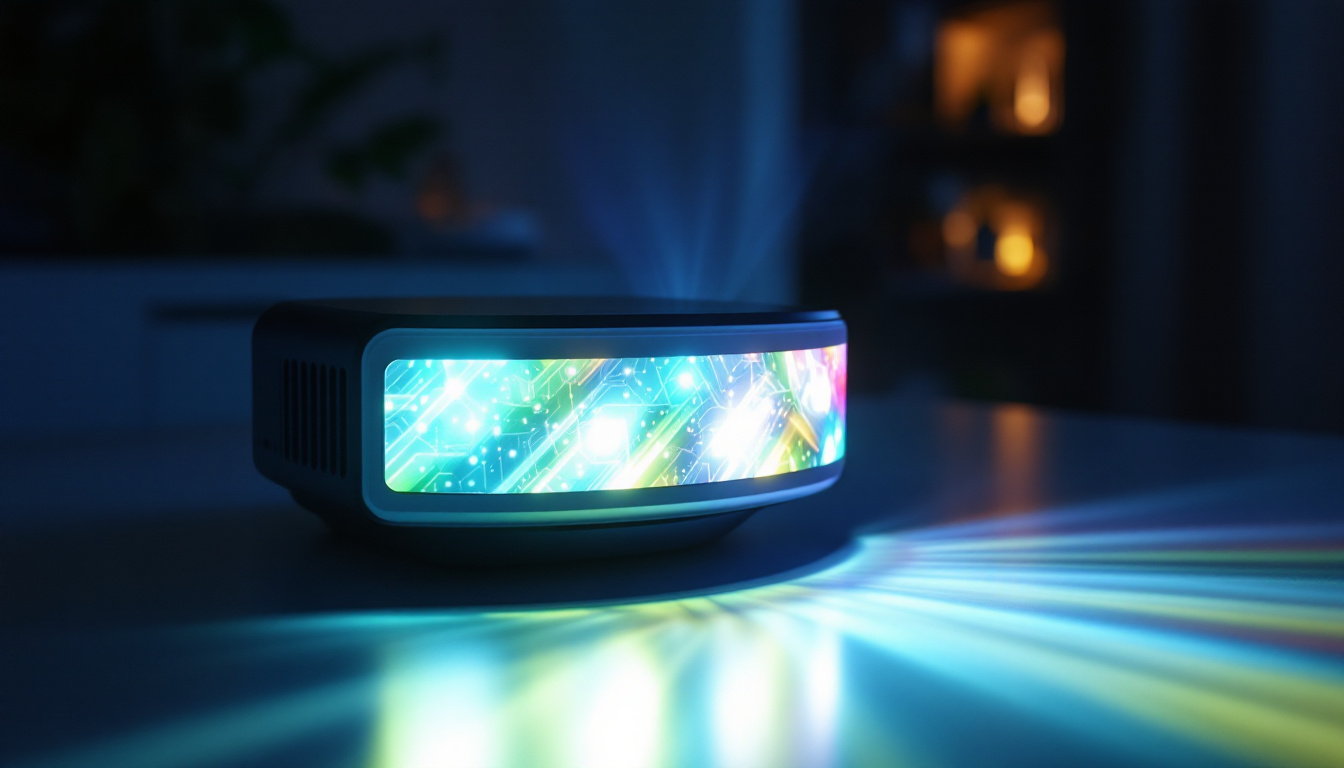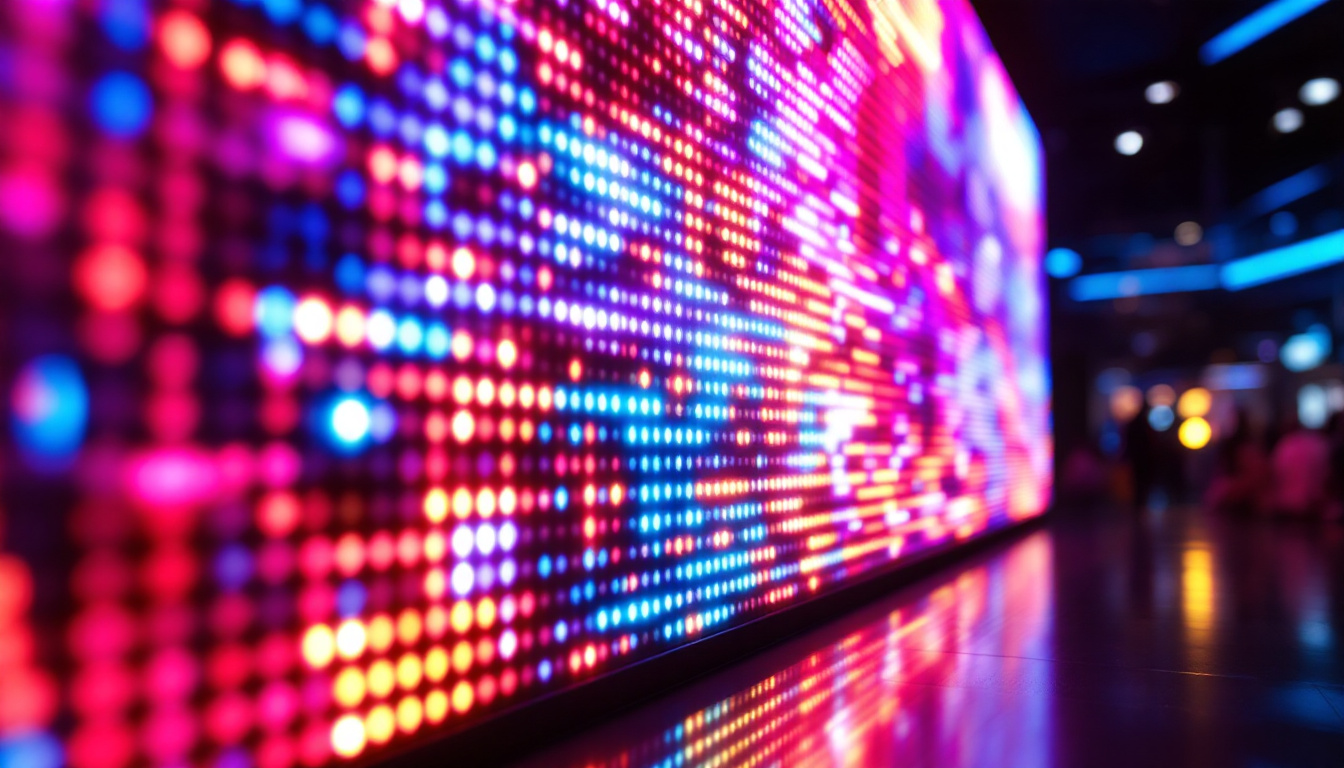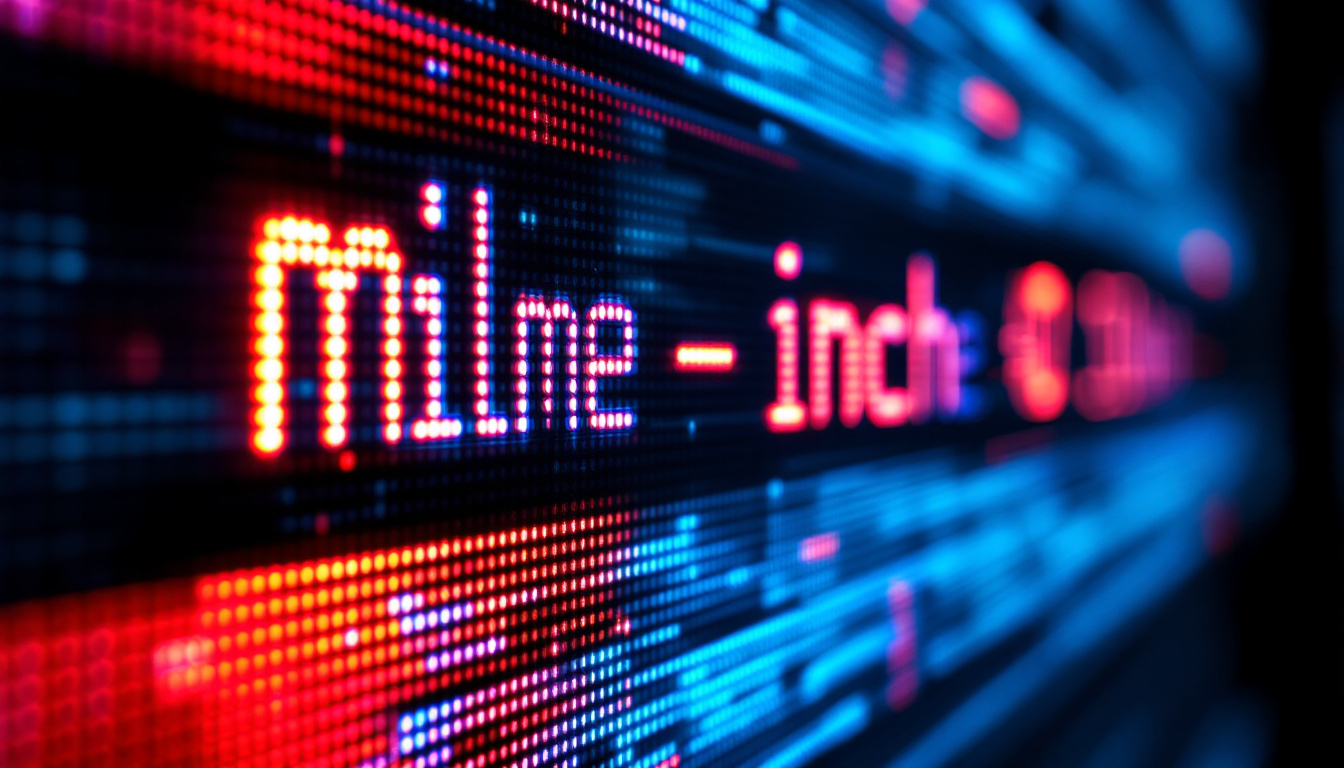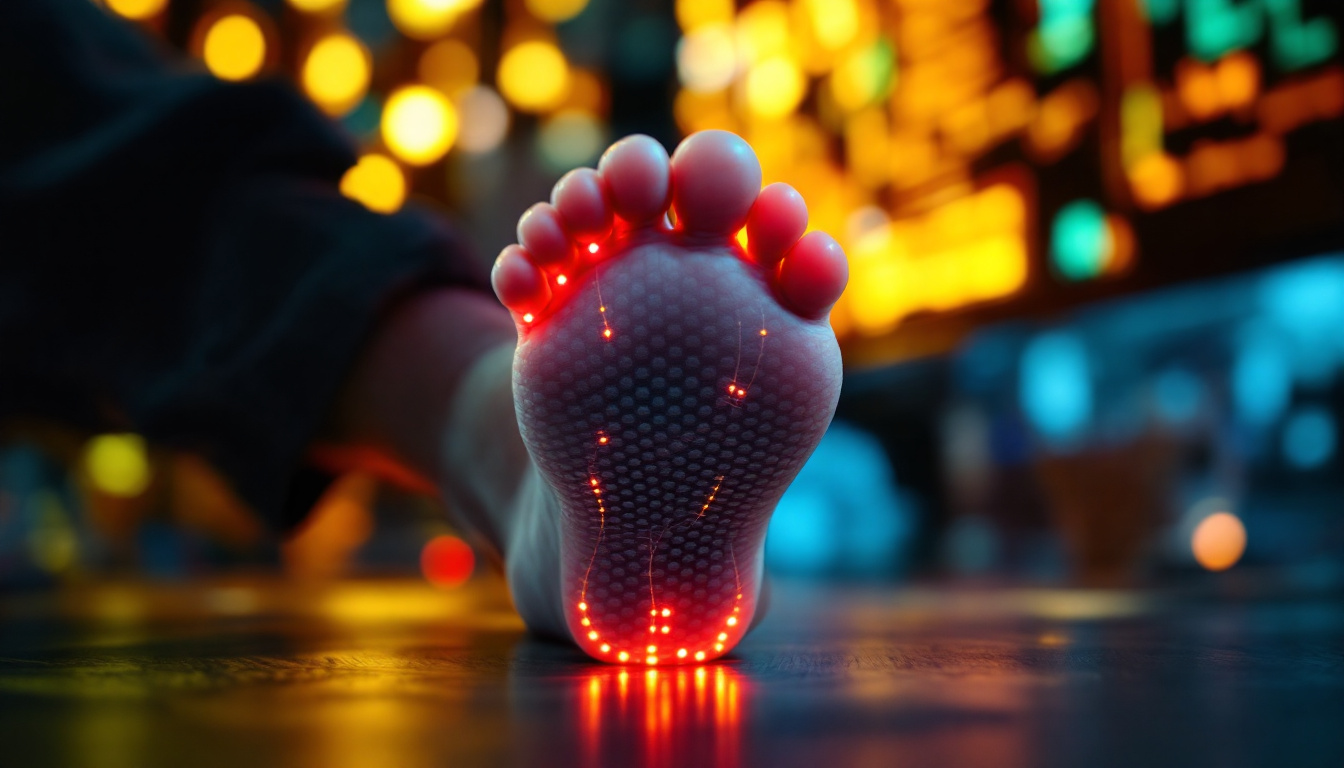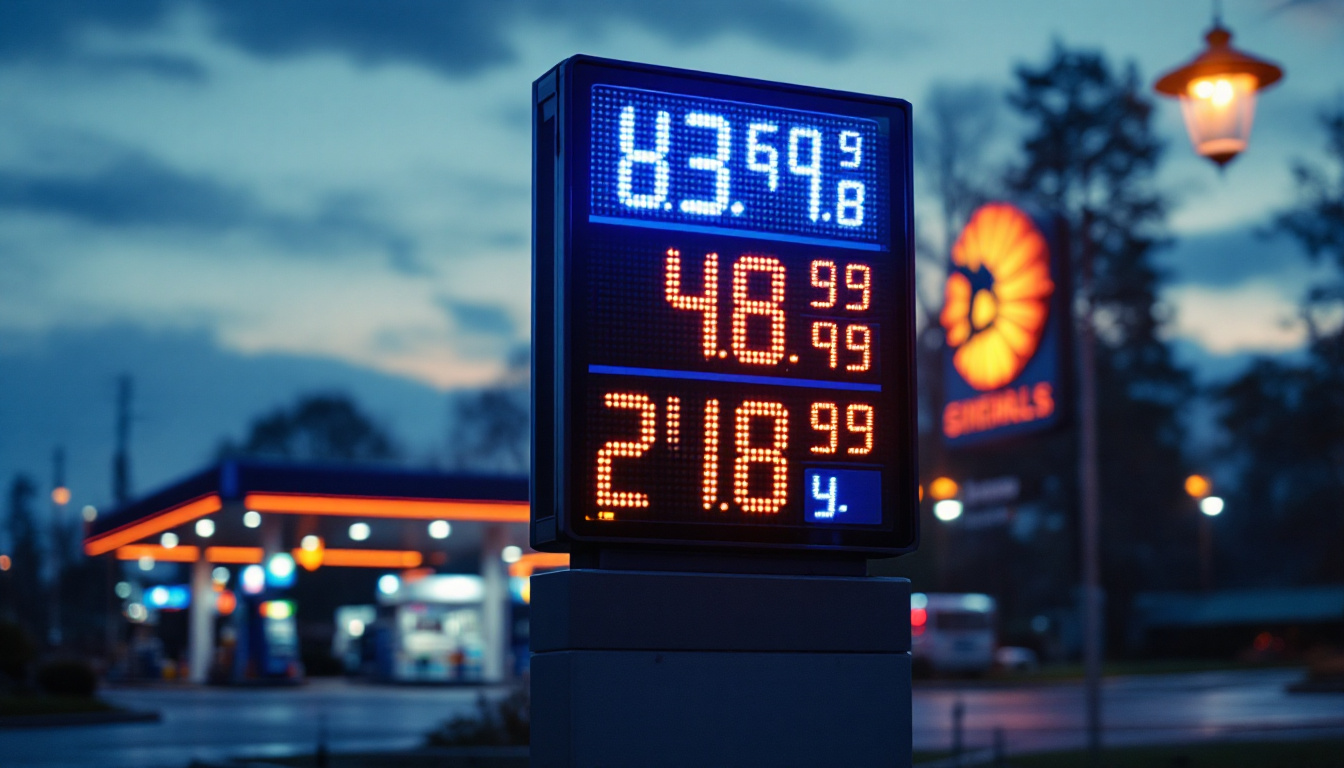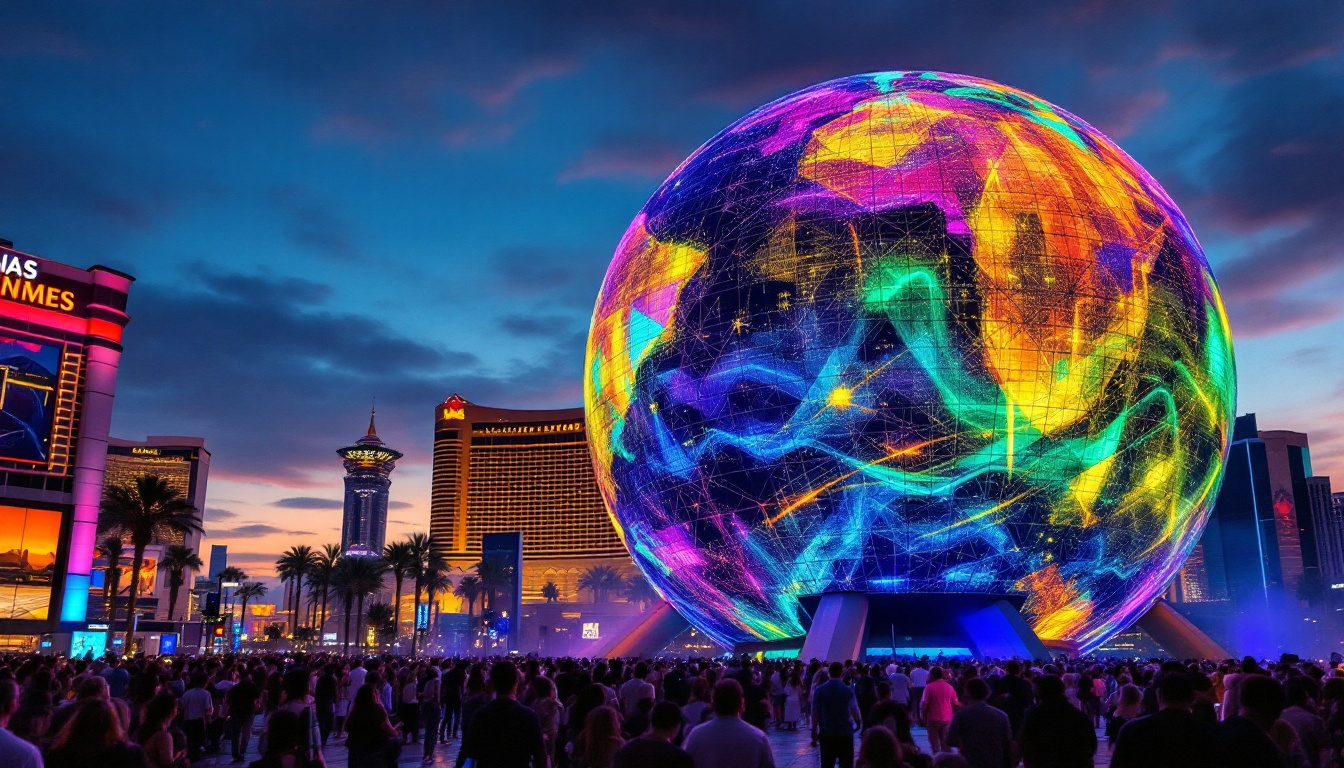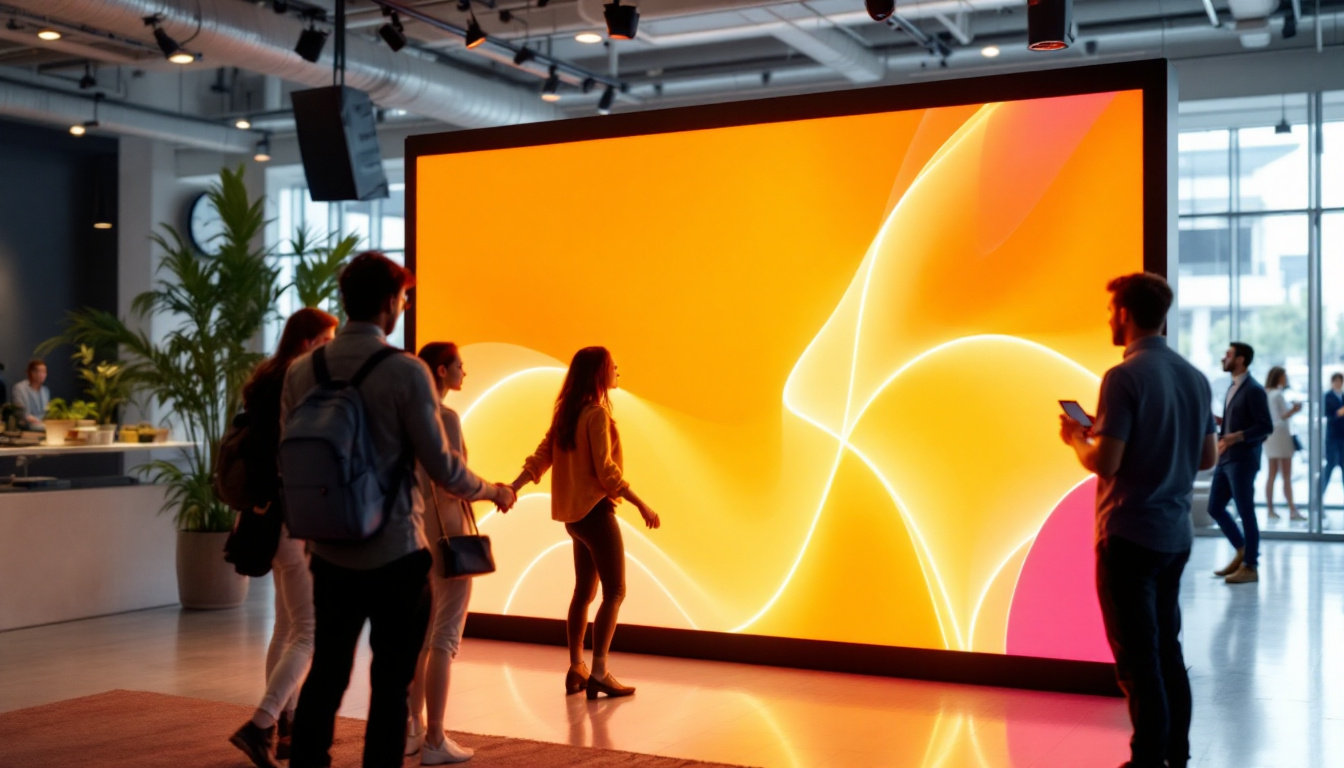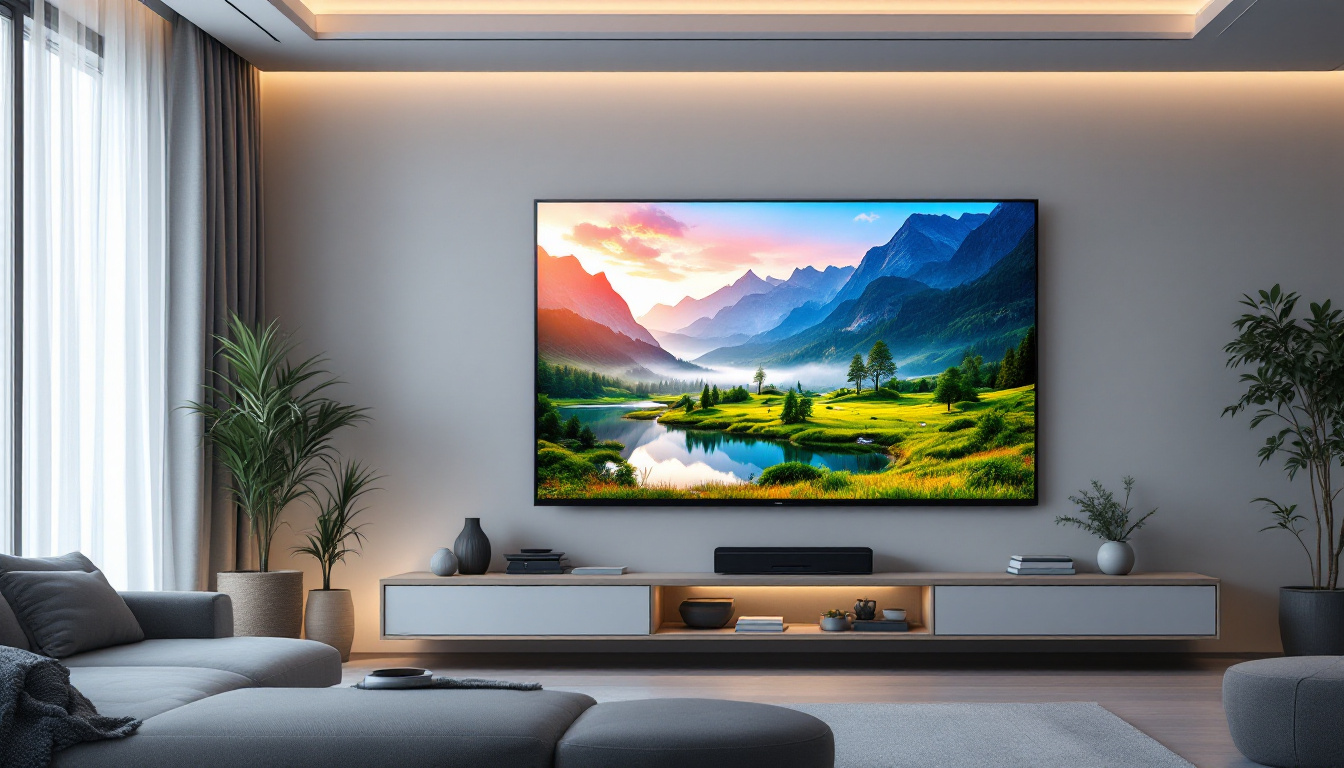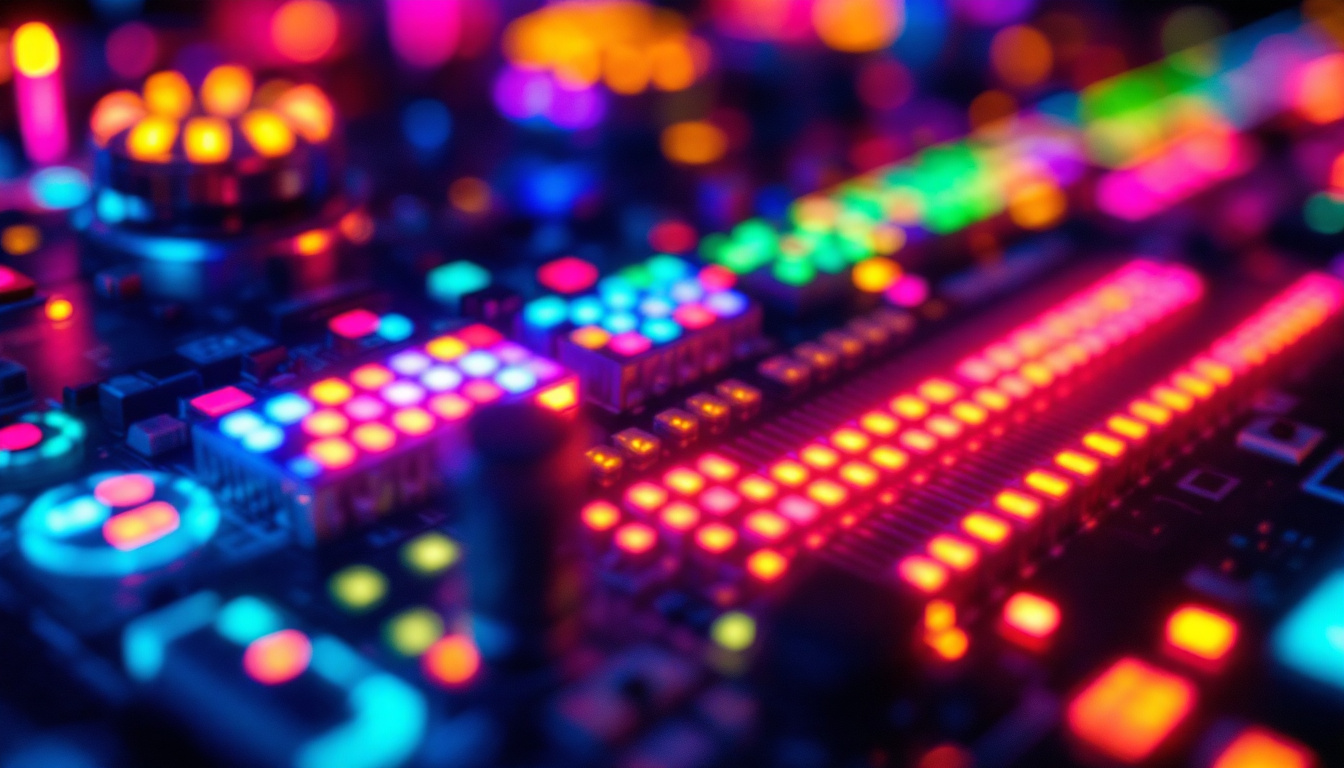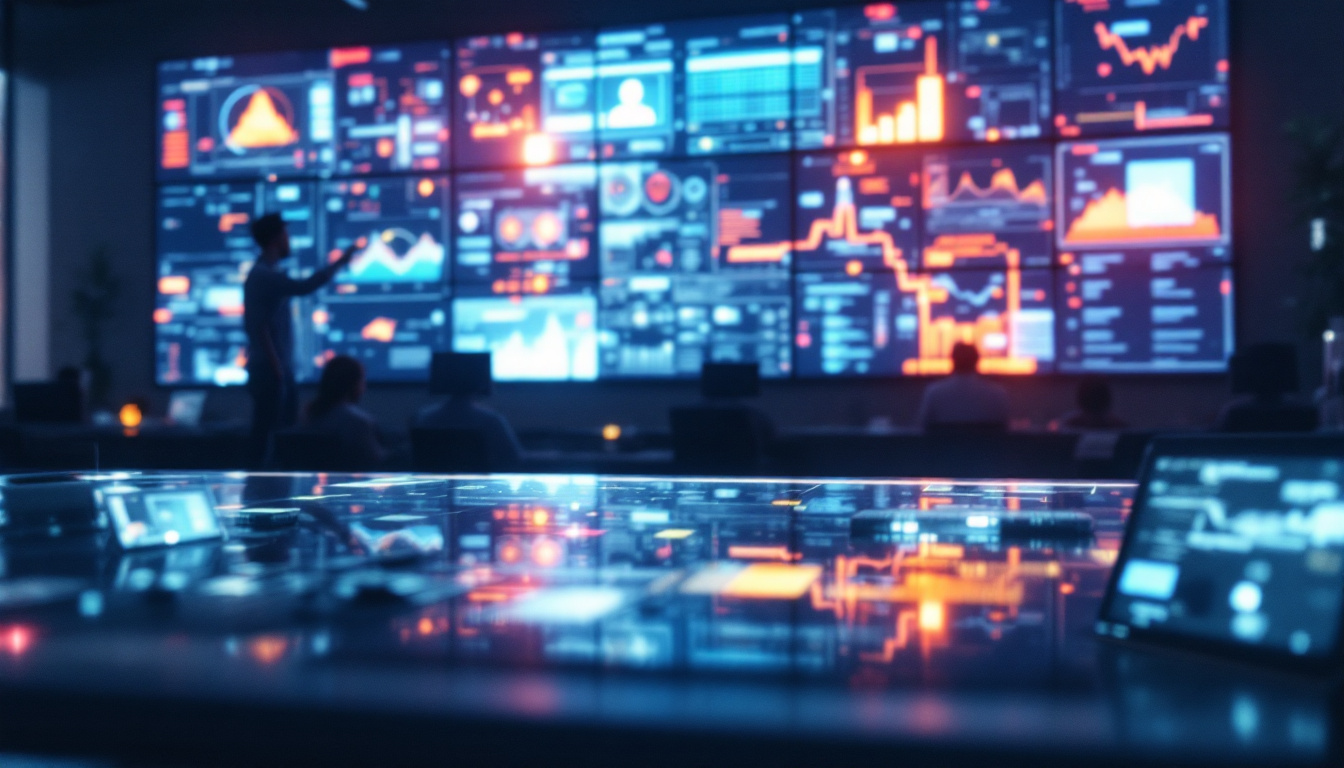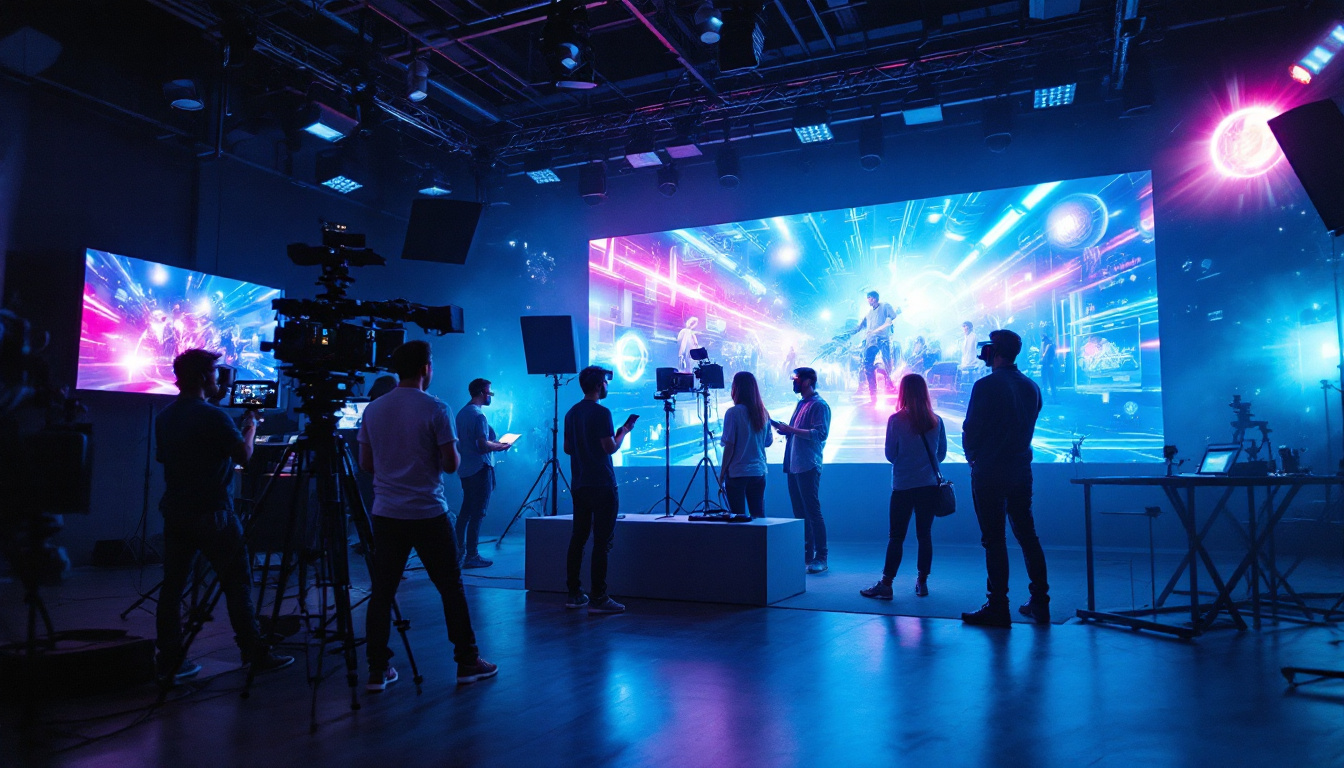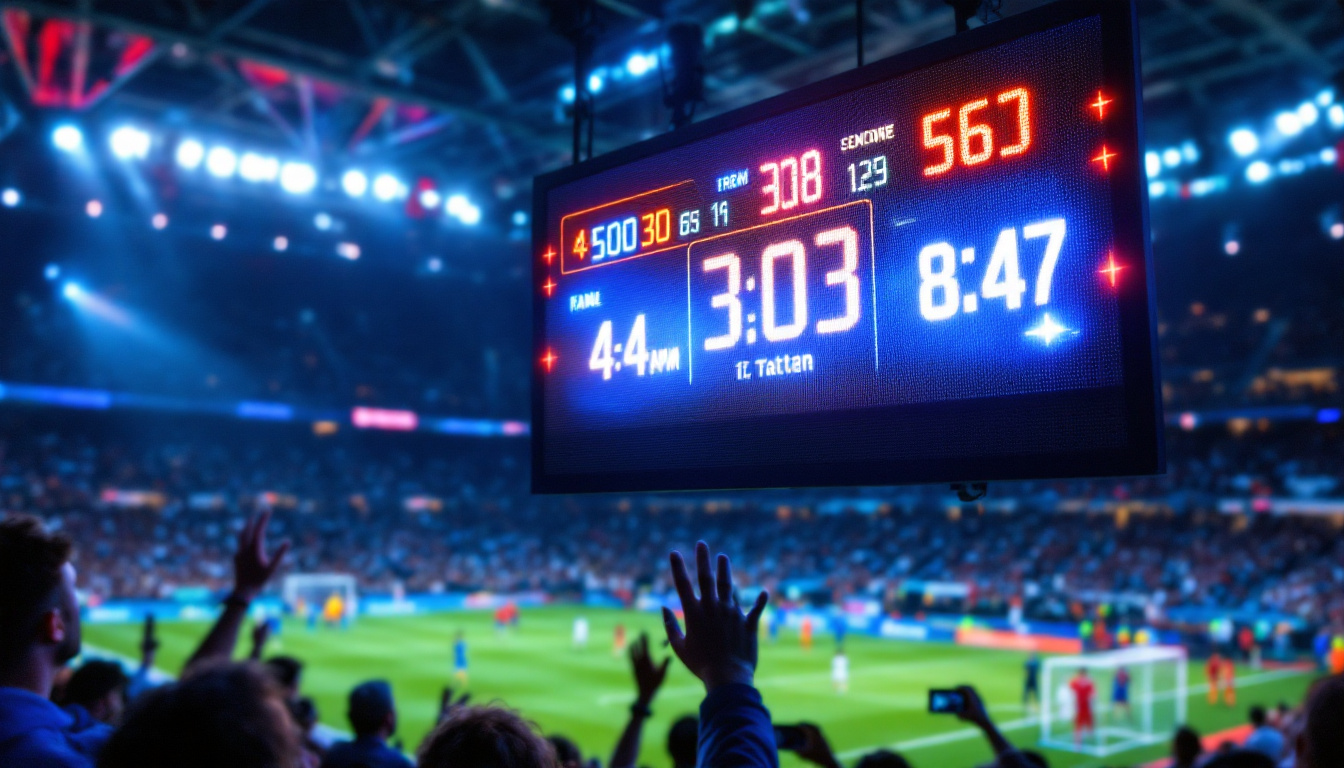In the rapidly evolving world of technology, LED displays have emerged as a pivotal component across various industries. From advertising to entertainment and even in personal devices, these displays offer unparalleled brightness, energy efficiency, and versatility. This article delves into the intricacies of LED displays, exploring their functionality, applications, and the future of this dynamic technology.
Understanding LED Technology
LED, or Light Emitting Diode, is a semiconductor device that emits light when an electric current passes through it. This technology has revolutionized the way we perceive visual information, providing a more efficient and vibrant alternative to traditional display methods. The advent of LED technology has not only transformed consumer electronics but has also significantly impacted industries such as automotive lighting, architectural illumination, and even horticulture, where specific light wavelengths can enhance plant growth.
How LED Displays Work
At the core of LED displays are tiny diodes that emit light. These diodes are arranged in a matrix, allowing them to create images by turning on and off in rapid succession. The colors produced by these displays come from a combination of red, green, and blue (RGB) diodes. By adjusting the intensity of each color, a full spectrum of colors can be achieved, resulting in vivid and dynamic visuals. This capability makes LED displays particularly popular in settings where color accuracy and brightness are paramount, such as in graphic design studios and high-end televisions.
Unlike traditional LCD screens that rely on backlighting, LED displays emit light directly, which enhances brightness and contrast. This direct emission allows for thinner and lighter designs, making LED technology highly desirable for various applications. Furthermore, the energy efficiency of LED displays means they consume significantly less power than their predecessors, leading to lower operational costs and a reduced environmental footprint. As a result, many businesses are transitioning to LED technology not only for its aesthetic benefits but also for its sustainability.
Types of LED Displays
There are several types of LED displays, each suited for different applications. The most common types include:
- Direct View LED Displays: These displays use individual LEDs to create images and are often used in large outdoor screens and billboards. Their ability to maintain visibility in bright sunlight makes them ideal for advertising and public information displays.
- LED-backlit LCD Displays: These displays utilize LEDs to backlight an LCD panel, providing improved brightness and color accuracy. They are widely used in televisions and computer monitors, offering a balance between performance and cost.
- Organic LED (OLED) Displays: A newer technology, OLED displays use organic compounds to emit light, allowing for deeper blacks and better contrast. This technology is increasingly found in smartphones and high-end televisions, where the quality of the display can significantly enhance the user experience.
In addition to these common types, there are also specialized LED displays such as MicroLED and MiniLED, which offer even greater resolution and color performance. MicroLED technology, for instance, utilizes microscopic LEDs to create images, resulting in displays that can achieve incredible levels of detail and brightness. These innovations are paving the way for the next generation of display technologies, promising even more immersive experiences in entertainment, gaming, and virtual reality applications.
Applications of LED Displays
The versatility of LED displays has led to their adoption in a wide range of applications. From commercial advertising to personal devices, their impact is significant.
Advertising and Marketing
One of the most prominent uses of LED displays is in advertising. digital billboards and signage have become commonplace in urban environments, capturing the attention of passersby with vibrant colors and dynamic content. These displays can be easily updated, allowing businesses to promote sales or events in real-time, making them a powerful tool for marketers. Additionally, the ability to target specific demographics through location-based advertising enhances the effectiveness of campaigns, as businesses can tailor their messages to the audience in a particular area. This level of customization not only maximizes engagement but also drives higher conversion rates, making LED displays an invaluable asset in the competitive advertising landscape.
Entertainment and Events
In the entertainment industry, LED displays are used in concerts, festivals, and sporting events. Large screens enhance the audience’s experience by providing close-up views of performances and displaying engaging visuals. Furthermore, the ability to create stunning light shows using LED technology has transformed the way events are produced, offering a multi-sensory experience. The integration of LED displays with sound systems and lighting creates a cohesive atmosphere that captivates audiences, making them feel more connected to the event. Moreover, advancements in LED technology, such as flexible and transparent displays, are paving the way for innovative stage designs that push the boundaries of creativity in live performances.
Corporate and Educational Use
LED displays are also making their mark in corporate and educational settings. In conference rooms, they serve as presentation tools, displaying slideshows, videos, and data in a clear and engaging manner. In classrooms, interactive LED displays facilitate learning by allowing teachers to present information dynamically, fostering greater student engagement. These displays can also support collaborative learning environments, where multiple users can interact with the content simultaneously, encouraging teamwork and discussion. Furthermore, the use of LED technology in educational institutions extends beyond the classroom; campuses are increasingly adopting digital wayfinding systems powered by LED displays to help students and visitors navigate their surroundings efficiently, enhancing the overall educational experience.
The Advantages of LED Displays
LED displays offer numerous advantages over traditional display technologies, making them an attractive option for various applications.
Energy Efficiency
One of the most significant benefits of LED displays is their energy efficiency. They consume less power compared to traditional displays, resulting in lower electricity bills and a smaller carbon footprint. This efficiency is particularly important for large-scale installations, such as outdoor billboards, where energy costs can be substantial. Furthermore, the reduced energy consumption of LED displays contributes to a more sustainable environment, aligning with the growing global emphasis on eco-friendly practices. Businesses that adopt LED technology can also enhance their corporate social responsibility image, appealing to environmentally conscious consumers.
Longevity and Durability
LED displays are known for their longevity, often lasting up to 100,000 hours or more. This durability reduces the need for frequent replacements, making them a cost-effective solution in the long run. Additionally, LED technology is less susceptible to damage from environmental factors, making it suitable for outdoor use. Unlike traditional displays that may suffer from screen burn-in or degradation over time, LED displays maintain their performance and brightness levels much longer. This resilience not only minimizes maintenance costs but also ensures that the displays continue to deliver high-quality visuals throughout their lifespan, making them a reliable choice for both commercial and residential applications.
High Brightness and Contrast
The brightness and contrast of LED displays are superior to many other display technologies. This capability ensures visibility in various lighting conditions, from bright sunlight to dimly lit environments. The ability to produce deep blacks and vibrant colors enhances the overall viewing experience, making LED displays ideal for a wide range of applications. Additionally, the advanced technology behind LED displays allows for better color accuracy and a wider color gamut, which is essential for industries such as graphic design, photography, and video production. The enhanced visual quality not only captivates audiences but also allows for more effective communication of messages, whether in advertising, presentations, or entertainment venues.
Challenges and Considerations
Despite their many advantages, LED displays are not without challenges. Understanding these challenges is crucial for making informed decisions regarding their use.
Initial Costs
The initial investment for LED displays can be higher than traditional display technologies. While the long-term savings on energy and maintenance can offset these costs, businesses must be prepared for the upfront expenditure. Careful budgeting and planning are essential to ensure that the investment aligns with the organization’s financial strategy.
Technical Complexity
Implementing LED technology can involve a steep learning curve, particularly for organizations unfamiliar with the technology. Proper training and technical support are necessary to ensure that staff can effectively operate and maintain LED displays. This complexity may deter some businesses from fully embracing the technology.
The Future of LED Displays
The future of LED displays is bright, with ongoing advancements promising even more exciting developments. As technology continues to evolve, several trends are emerging that could shape the landscape of LED displays.
Integration with Smart Technology
As the world becomes increasingly interconnected, the integration of LED displays with smart technology is anticipated to grow. This integration will enable displays to respond to real-time data, allowing for dynamic content that can adapt to changing conditions. For instance, digital billboards could adjust their messaging based on traffic patterns or weather conditions, enhancing their effectiveness.
Higher Resolution and Flexibility
Advancements in LED technology are leading to higher resolution displays that offer even greater detail and clarity. Flexible LED displays are also on the horizon, allowing for innovative designs that can be adapted to various shapes and sizes. This flexibility opens up new possibilities for creative applications in advertising, art installations, and architecture.
Sustainability Initiatives
As environmental concerns become more pressing, the demand for sustainable technologies is rising. LED displays are already more energy-efficient than traditional options, but future developments may focus on further reducing their environmental impact. Innovations in materials and manufacturing processes could lead to even more sustainable LED solutions, appealing to eco-conscious consumers and businesses.
Conclusion
LED displays have transformed the way information is presented and consumed across various sectors. Their energy efficiency, durability, and vibrant visuals make them a preferred choice for advertising, entertainment, and education. While challenges such as initial costs and technical complexity exist, the advantages far outweigh the drawbacks.
As technology continues to advance, the future of LED displays looks promising. With potential integrations with smart technology, higher resolutions, and a focus on sustainability, LED displays are poised to remain at the forefront of visual communication. Embracing this technology not only enhances user experience but also paves the way for innovative applications that could redefine the landscape of displays in the years to come.
Discover LumenMatrix’s Innovative LED Solutions
Ready to elevate your visual communication with the latest in LED technology? Look no further than LumenMatrix, where innovation meets excellence. Our extensive range of LED display solutions, from Indoor and Outdoor LED Walls to specialized displays like Vehicle, Sports, and Floor LED, is designed to capture your audience’s attention and bring your brand to life. Whether you’re seeking to create immersive environments or deliver impactful advertising, LumenMatrix’s LED displays are tailored to your needs. Experience the future of vibrant and energy-efficient visual displays. Check out LumenMatrix LED Display Solutions and transform your space today.

